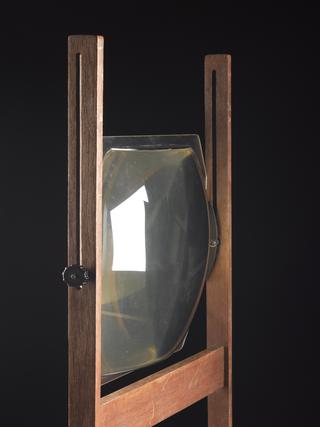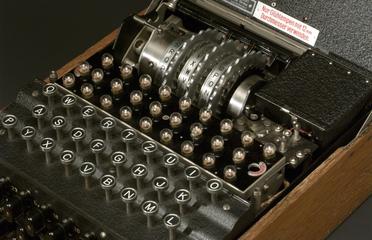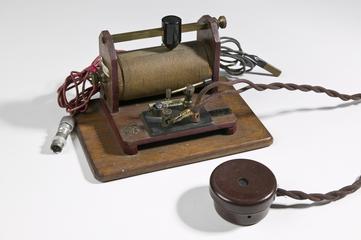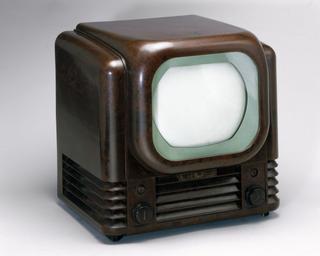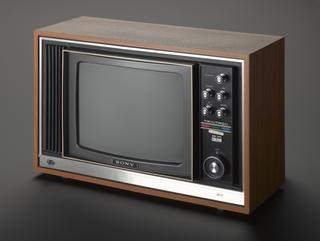
National Panasonic Super Sensitive 10 Transistor R-307
- Made:
- circa 1963 in Japan
- manufacturer:
- Matsushita Electric Industrial Co., Ltd.






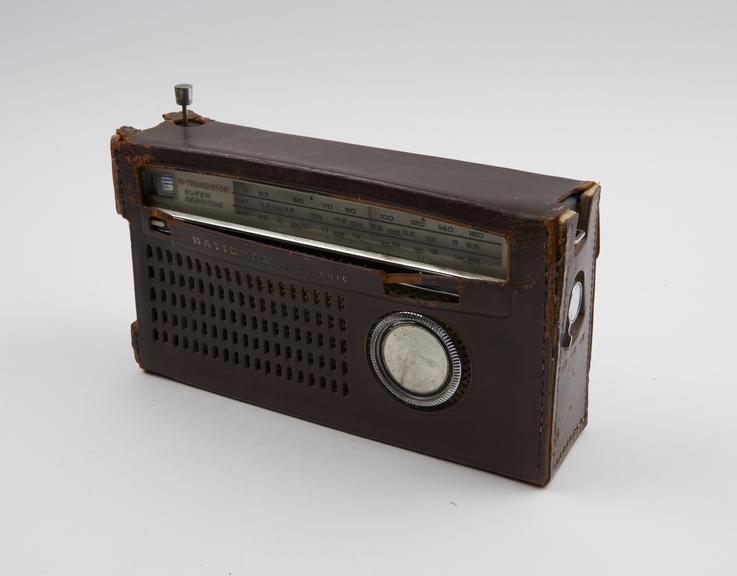




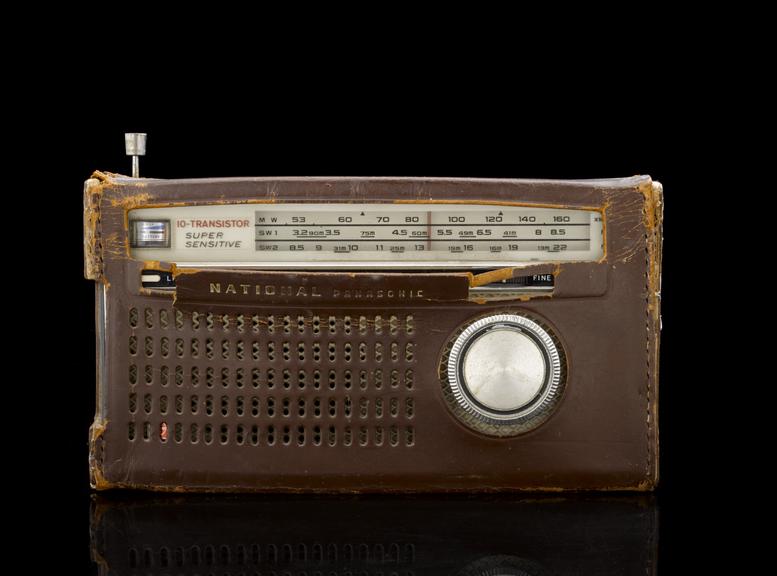
National Panasonic Super Sensitive 10 Transistor R-307, by Panasonic, Japan, c.1963
This is a rare short-wave radio receiver with a leather case, made by Panasonic in Japan in the early 1960s. Made and sold in the Far East, this three-band radio was one of the earliest such short-wave receiver to bring affordable long-distance listening to the public in an easily portable form.
Developed for the Far Eastern market where radio broadcasting and listening were often strictly controlled and hence demand for long-distance reception was high, there were no comparable devices available in Britain in the early 1960s.
This is a rare short-wave radio receiver with a leather case, made by Panasonic in Japan in the early 1960s. Made and sold in the Far East, this three-band radio receiver was one of the earliest such short-wave and long-distance receiver to bring affordable world-wide listening to the public in an easily portable form. Comparable devices were unavailable in Britain in the early 1960s as there was little demand for long-distance radio reception and to listen to distant foreign stations. The few short-wave receivers available in the UK in the early 1960s were very large and expensive ones in a polished cabinet. They used valves (vacuum tubes) which required bulky batteries or mains power and additionally this time no car radios would tune to short-wave.
In contrast, Far Eastern radio broadcasting and listening were often strictly controlled, hence the high demand for long-distance reception. The technology behind this device is also unusual as it was a rare example of a Japanese product that used European-licensed technology – in this case Phillips conductors (transistors) – rather than USA-licensed technology.
In the early 1960s, the owner was living with his family in Singapore and working as part of a large international Christian radio station in Manila, some 2000 miles away and needed something compact for SW listening. Items such as this receiver were just appearing on Asian markets, and were among the first transistorised all-wave receivers, and also, by those days’ standards, unbelievably compact. The item cost a mere £10 at that time, and was especially popular in countries with propagandised monopoly broadcasting – it could tune with ease to the BBC or Voice of America, or Radio Australia.
The donor used it for monitoring our Manila transmitters; having a leather case and shoulder strap he could take it to places high and low – Singapore being a fairly hilly island – to monitor the signal from Manila. There was some excellent reception on the hilltops (only about 600 feet up), and moderate reception elsewhere, usually needing the receiver’s own telescopic aerial to be pulled up. The owner would take the receiver round the island in his baby Fiat car, to check that reception was possible.
The owner also used it also for personal listening to the BBC – their news, dramas and (in those days) even a weekly church service. The sound quality was very good, and the receiver had a tiny meter on the face to enable the listener to see if it is tuned to the maximum wave strength. The donor’s wife also used the receiver with their small children to listen together to ‘Listen with Mother’ from Radio Australia.
Details
- Category:
- Radio Communication
- Object Number:
- 2018-412
- Materials:
- leather, metal (unknown) and plastic (unidentified)
- type:
- radio receiver
- credit:
- David Huntley
